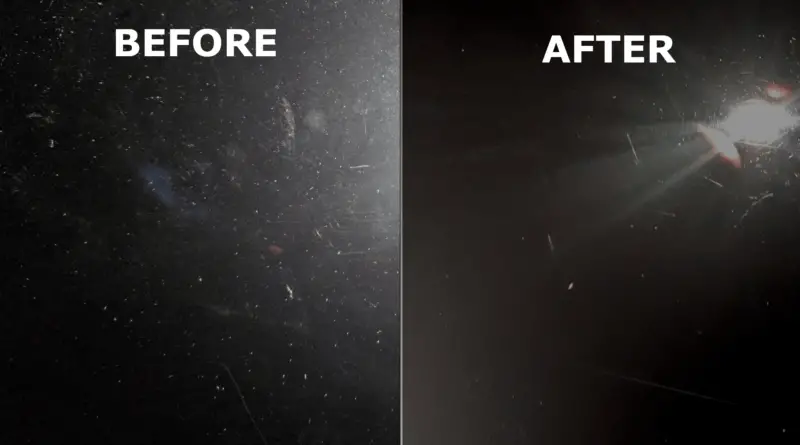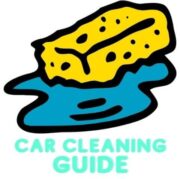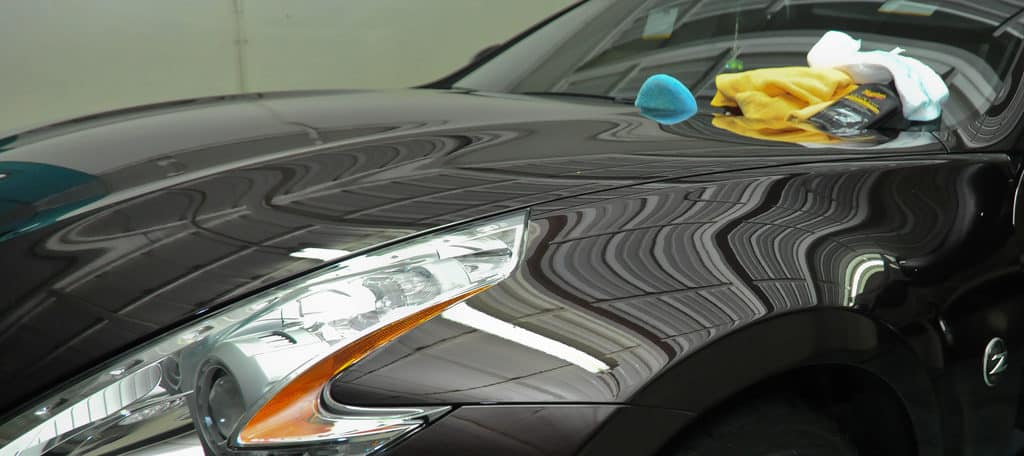Last Updated on October 3, 2023 by Chase Manhattan
No matter how thoroughly you clean your car, you just can’t seem to find that smooth surface that you’re looking for. Rough spots, tree sap, bug residue and swirl marks abound, how do you remove these surface contaminants without compromising your car’s finish?
The answer is knowing how to use a clay bar to remove embedded dirt, other debris particles, and to completely clean your car’s paint, remove contaminants, and leave your vehicle looking like a brand new car all over again.
So keep reading and let’s get into it!
- What Is The Two Bucket Method To Wash Car Properly - July 2, 2021
- 5 Best Car Seat For Grandparents That Impress Your In Laws - May 18, 2021
- 5 Best Rooftop Cargo Box For Audi Q5 [Review & Buying Guide] - May 11, 2021
Quick Navigation
How To Use A Clay Bar On A Car
Using a clay bar can be a daunting process, but it’s truly accessible for beginners and experts alike. When using the appropriate amount of clay lube, and a bit of patience, you’ll get exactly the results you want when following the steps below.
1. Wash and dry the car
Before you use a clay bar on your car, it’s important to remove any surface contaminants from the vehicle. If you do not, it’s likely that you’ll create scratches in the clear coat that will have to be repaired further down the line.
Related article: What Is Clear Coat?
2. Spray clay lubricant onto the desired area
You can use a dedicated clay lubricant, like Chemical Guys’ Clay Luber, but you can also use a generic detailing spray as your lubricant instead. There is no such thing as excess lubricant, be sure to spray generously throughout the whole claying process.
3. Work the clay bar in a circular shape
You will feel it as the clay bar removes the embedded dirt. After a few passes, the car’s surface will feel smooth once all the surface contaminants have been removed from the area. Be sure to liberally spray lubricant throughout this step. Grab a new clay bar, or flip to a fresh side as necessary.
4. Wipe the area with a clean microfiber towel
Spray the same area with your clay lubricant, detailing spray, or soapy water from a spray bottle. Use your microfiber towel to wipe away any remaining residue.
5. Examine and touch-up as necessary
After you’re done clay barring your car, check to make sure that you have an entirely clean surface. You will know that there’s more work to do if the car’s finish still feels rough.
6. Apply Wax or Paint Sealant
This step is highly recommended because you’ll want to preserve your car’s paint after it has been clay barred. By applying wax or a paint sealant, you will protect your vehicle’s paint from future contamination while avoiding the need for paint correction down the line.
Related read: How To Protect Car Paint
Video Reference
Benefits of Using A Clay Bar
- Deep Cleansing: Clay bars effectively remove stubborn dirt, grime, and contaminants that regular washing cannot eliminate.
- Restores Shine: By lifting embedded dirt and contaminants, the paint surface becomes smoother, allowing light to reflect more evenly and restoring the car’s original glossy shine.
- Improved Clarity: Eliminates swirl marks, light scratches, and water spots, resulting in a clearer and more reflective paint surface.
- Smooth Texture: Clay bar treatment creates a smooth and polished finish, providing a perfect canvas for applying wax or sealants.
- Enhanced Waxing and Sealant Adhesion: With a clean surface, wax and sealants adhere better, increasing their effectiveness and durability.
- Prevents Oxidation: By removing harmful contaminants, the risk of oxidation and paint damage is reduced, preserving the car’s paint for a longer time.
- Saves Time and Money: Regular use of a clay bar can reduce the need for frequent polishing or more aggressive paint correction methods, saving time and money in the long run.
- Prolongs Paint Life: By preventing dirt from etching into the paint over time, clay bar treatment helps extend the life of the car’s paint job.
- Professional-Level Results: Achieves a professional-grade finish, elevating the overall appearance of the car and making it look well-maintained.
- User-Friendly: Clay bars are easy to use, making them accessible to car owners of all skill levels.
- Non-Abrasive: Unlike harsh abrasives or compounds, clay bars are non-abrasive and won’t damage the paint when used correctly.
- Versatility: Clay bars can be used on various surfaces, including paint, glass, metal, and plastic, providing a complete cleaning solution for the entire vehicle.
[Different Types of Car Scratches That Piss You Off]
What Is Clay Bar Lubricant
Clay bar lubricant is typically a paste or spray lubricant that is designed to lubricate and protect a car’s paint during the claying process. When you use a clay bar, you are gliding across a painted surface to remove present contaminants; if you do this without any clay lube, it’s likely that you’ll then scratch your car paint with the particles that you’ve just picked up.
How Does A Clay Bar Work
Clay bars work to remove paint overspray, tree sap, bug residue, remnants of acid rain, and brake dust – amongst many other things – from painted surfaces.
The stickiness of the clay gives you a soft enough material that will allow you to scrub your car without damaging the vehicle’s paint. You’ll notice afterward that all of the dirt is now stuck to the clay bar instead of the paint.
Depending on the grade, or degree, of the clay bar treatment, you may need to touch up the paint with some wax afterward.
[What Is Paint Protection Film]
Degrees of Clay Bars
The degree to which the clay bar will remove contaminants will depend on it’s grade. Clay bars come in three grades:
- fine grade clay bar
- medium grade clay bar
- heavy grade clay bar
Fine Grade Clay Bars
Fine grade bars are used to remove dust and other light contaminants from the vehicle’s paint.
Medium Grade Clay Bars
Medium grade bars are used to remove thicker material that is liable to damage the paint should they go unaddressed.
Heavy Grade Clay Bars
Heavy grade bars are used to treat large material that is stuck in the car’s paint. After using a heavy grade clay bars, it’s likely that you will need to wax the car afterward as it will leave streaks and hazing on the surface.
[Pros and Cons of Paint Protection Film]
Clay Bar Before And After

[How To Fix Plastic Bumper Scratches Like a Professional]
Not all vehicles will need the clay bar process. For example, newer vehicles with fewer miles may not need clayed if they don’t have many contaminants in the paint.
But, if you plan to wax your car by hand or with a buffer its’ recommended that you do a clay bar treatment first. If you don’t, it’s possible that you’ll scratch your vehicle’s paint during the process. You’ll want to check to see if there are rough patches or contaminants in your paint.
This can be determined by feeling the car with your fingers after it is washed. If the surface feels dirty or rough, it needs clayed. You want to wind up with a smooth, clean surface.
Check carefully around sections of the vehicle where dirt is common, such as the bottom of the doors or the front bumper.
If you find that some sections need clayed but not others, you may only focus on the sections that need it.
Best Auto Detailing Clay Bar Kit
Since a clay bar is an auto detailers best friend, it’s important to high the right high quality products in your corner. Each product below can be viewed directly by clicking on the image.
I personally recommend the three products from the Chemical Guys below:
Chemical Guys CLY_113 Clay Bar & Synthetic Spray Lubricant Kit
This kit from chemical guys is priced at $21.99 when not on sale. It includes one bottle of clay lube, and a fine grade bar. It’s purchased easily from Amazon, and is applicable for most jobs.
Chemical Guys CLY_KIT_1 Heavy Duty Clay Bar Kit with Spray Lubricant
This kit is similar to the CLY_113 shown above, except that it comes with a heavy duty clay bar and is priced at $19.99 when not on sale, available through Amazon.
Chemical Guys Complete System Clay Bar Kit
[The Exhaustive Guide to Washing Your Car Without A Hose]
This complete clay bar kit from Chemical Guys is the holy grail of clay barring. This kit includes:
- 1 x Spray Bottle Lubricant
- 1 x Slate Clean Surface Wash
- 1 x Microfiber Towel
- 1 x Clay Bar
- 1 x Bottle of Butter Wax
- 1 x Foam Applicator Pad
This kit will give you everything you need for a clay bar treatment. It has the clean slate wash to prepare the car’s paint, the clay bar and lube for the barring process, and then a foam applicator pad for your to apply paint sealant after you’re done. You can’t go wrong here.
[Six Common Causes of Car Scratches]
FAQs
Do You Wash Before or After Clay Bar?
You should wash before every clay bar treatment. You’re going to be scrubbing your paint, so you wan’t the surface to be as clean as possible beforehand.
What Liquid Do You Use With Clay Bar?
In reality, you can use any liquid with a clay bar. It’s just important to keep the surface lubricated so you’re not scrubbing dirt particles into your vehicle’s paint.
Does Clay Bar Remove Scratches?
A clay bar will remove small scratches, but only those that you can’t feel with a few passes from your fingernail.
Do You Need To Dry Before Clay Bar?
It does help to have a dry car, but I’ve done it myself where the car is still wet. The main goal is to keep the surface lubricated during this process, so a detailing spray bottle is best for the job but water will work in a pinch.
[Guide to Stopping Rust Bubbles from Spreading on Car Paint]





